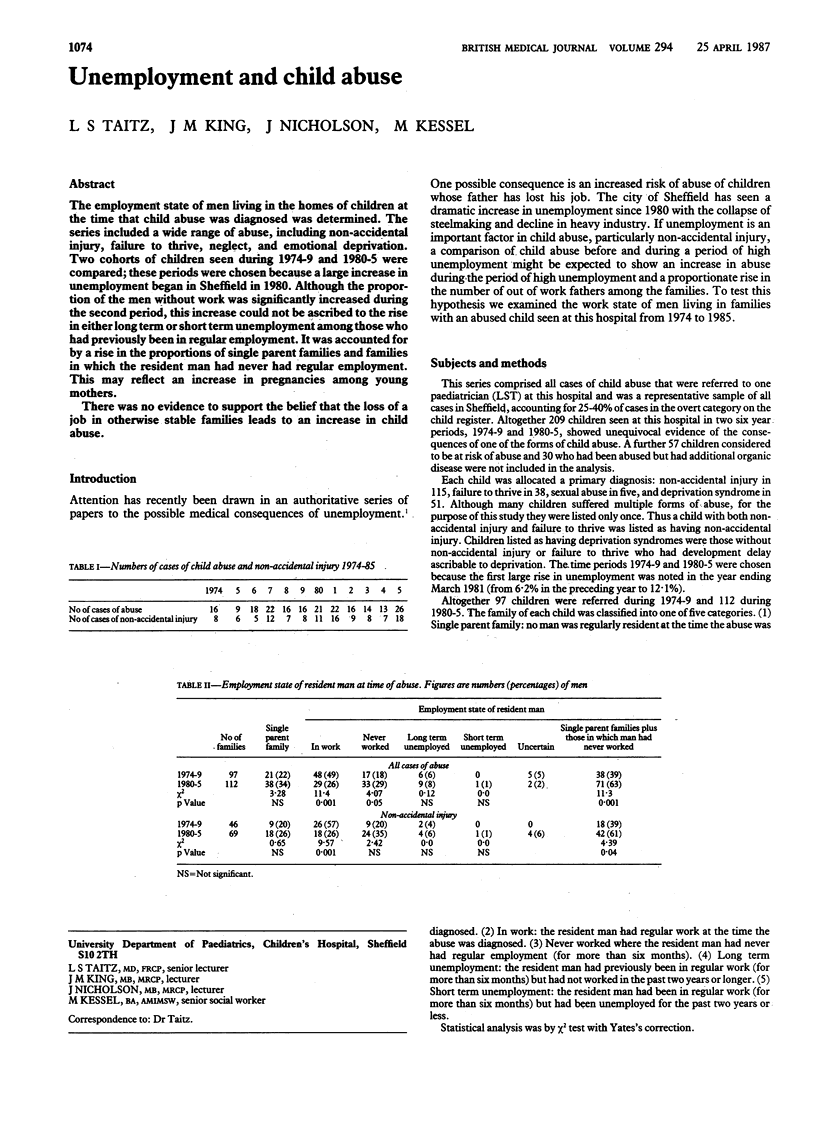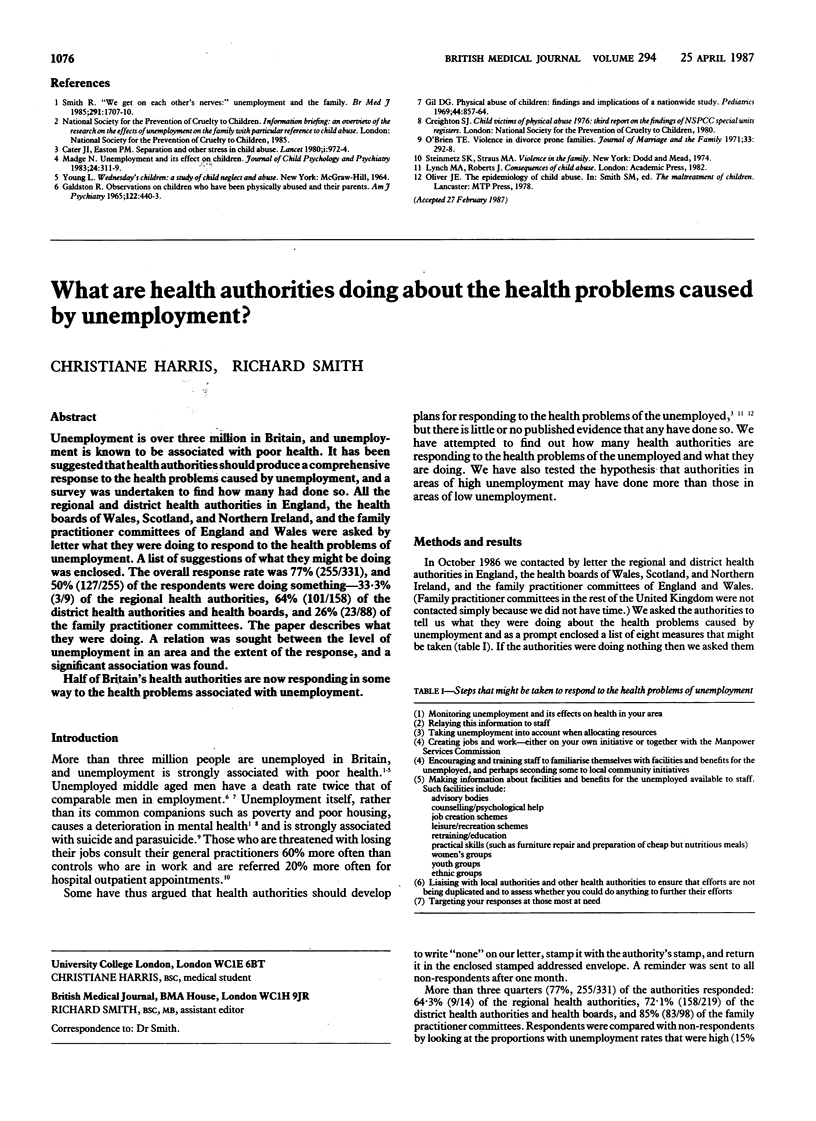Abstract
The employment state of men living in the homes of children at the time that child abuse was diagnosed was determined. The series included a wide range of abuse, including non-accidental injury, failure to thrive, neglect, and emotional deprivation. Two cohorts of children seen during 1974-9 and 1980-5 were compared; these periods were chosen because a large increase in unemployment began in Sheffield in 1980. Although the proportion of the men without work was significantly increased during the second period, this increase could not be ascribed to the rise in either long term or short term unemployment among those who had previously been in regular employment. It was accounted for by a rise in the proportions of single parent families and families in which the resident man had never had regular employment. This may reflect an increase in pregnancies among young mothers. There was no evidence to support the belief that the loss of a job in otherwise stable families leads to an increase in child abuse.
Full text
PDF


Selected References
These references are in PubMed. This may not be the complete list of references from this article.
- Cater J. I., Easton P. M. Separation and other stress in child abuse. Lancet. 1980 May 3;1(8175):972–974. doi: 10.1016/s0140-6736(80)91414-2. [DOI] [PubMed] [Google Scholar]
- Gil D. G. Physical abuse of children. Findings and implications of a nationwide survey. Pediatrics. 1969 Nov;44(5 Suppl):857–864. [PubMed] [Google Scholar]
- Smith R. "We get on each other's nerves": unemployment and the family. Br Med J (Clin Res Ed) 1985 Dec 14;291(6510):1707–1710. doi: 10.1136/bmj.291.6510.1707. [DOI] [PMC free article] [PubMed] [Google Scholar]


